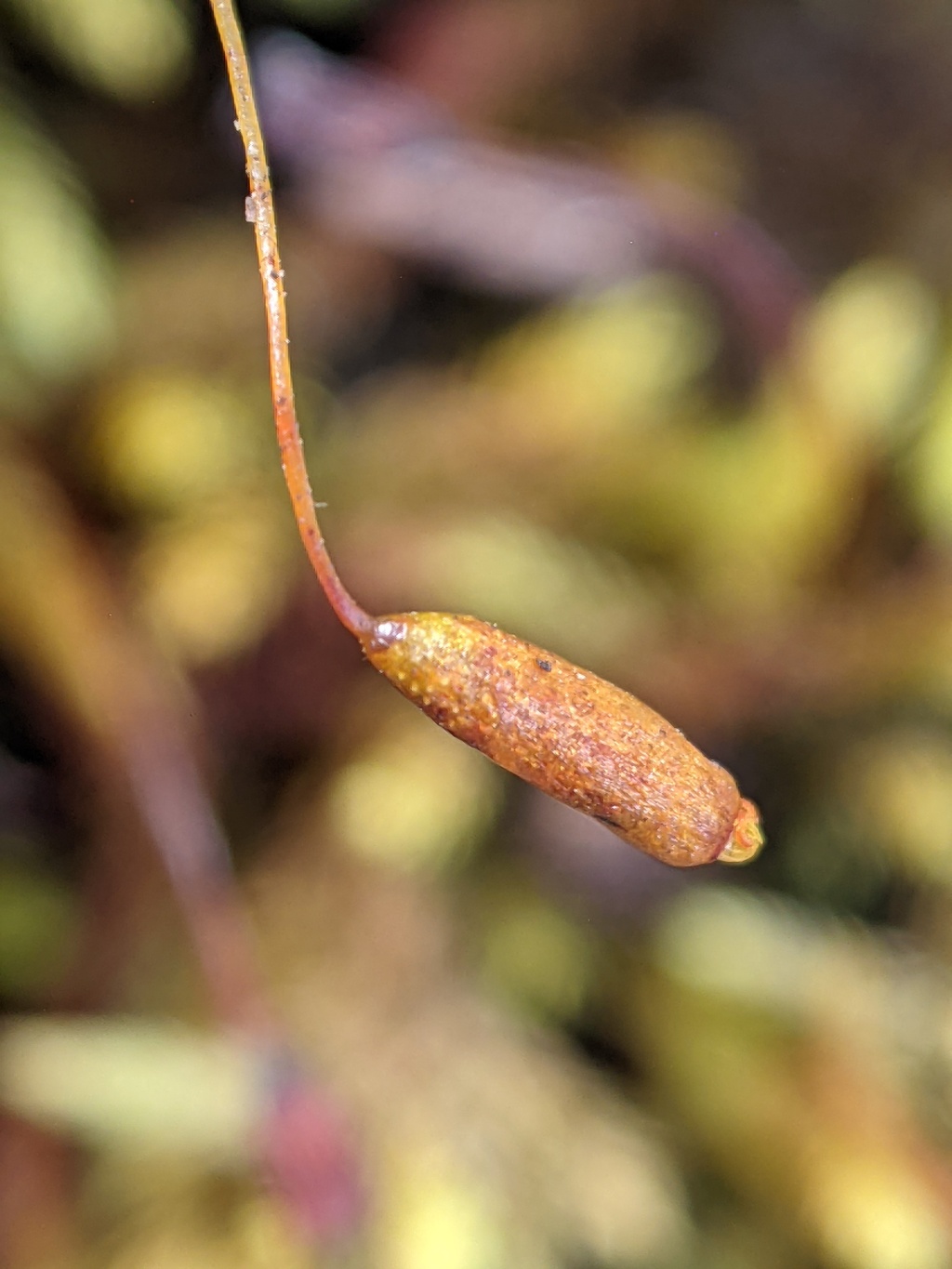Schizymenium
Paroicous or occasionally dioicous (not in Victoria) or synoicous (not in Victoria). Asexual reproduction rarely by axillary bulbils. Tufts or turves on soil or rock. Stems erect, simple or sparingly and irregularly forked when sterile and bearing innovations when fertile, with rhizoids at base; central strand present. Leaves becoming more crowded toward stem apex, ovate-lanceolate, lanceolate or linear-lanceolate, erect-spreading when moist, appressed and erect when dry, not or weakly decurrent; apex acute or acuminate; costa terminating in the apical leaf half or percurrent (not in Victoria); margin serrulate to serrate toward apex, entire or serrulate near base, plane, erect or narrowly recurved (not in Victoria), with longer and narrower cells but not forming a distinct border; laminal cells rhomboid or linear-rhomboid, sometimes becoming short-rectangular to subquadrate at base, smooth, unistratose. Perichaetia lateral, on short basal stems. Capsule erect to pendent, symmetric or slightly curved, pyriform to obloid-cylindric, tapered to a short to long neck, sometimes wrinkled in neck when dry, with a revoluble annulus. Calyptra cucullate, smooth, glabrous. Operculum convex, conic or apiculate. Peristome single and endostomal or double; exostome teeth shorter than endostome, when present 16, usually rudimentary, short and blunt, rarely extending above annulus and well-developed (not in Victoria); endostome usually with well-developed segments, with a low to relatively high (not in Victoria) basal membrane; cilia rudimentary or absent.
Around 50 species, but many species have not received taxonomic attention since their description and so with revision the total number will likely be much lower (Ochyra 2008). Most species occur in South America, with much fewer species in Central America, Africa, Malesia, Hawaii, and single species in Europe, Australasia, Antarctica and North America.
Schizymenium is distinguished from other genera in the Mniaceae by its peristome, which comprises an endostome only or a double peristome that consists of a well-developed endostome that is longer than the smooth exostome teeth (Shaw 2000). In other similar Mniaceae genera that produce sporophytes on short lateral shoots, the peristome is single and exostomial or double with the exostome longer and more conspicuous than the endostome (Shaw 2000).
 Spinning
SpinningShaw, A.J. (2000). Schizymenium shevockii (Bryaceae), a new species of moss from California, based on morphological and molecular evidence. Systematic Botany 25: 188–196.

